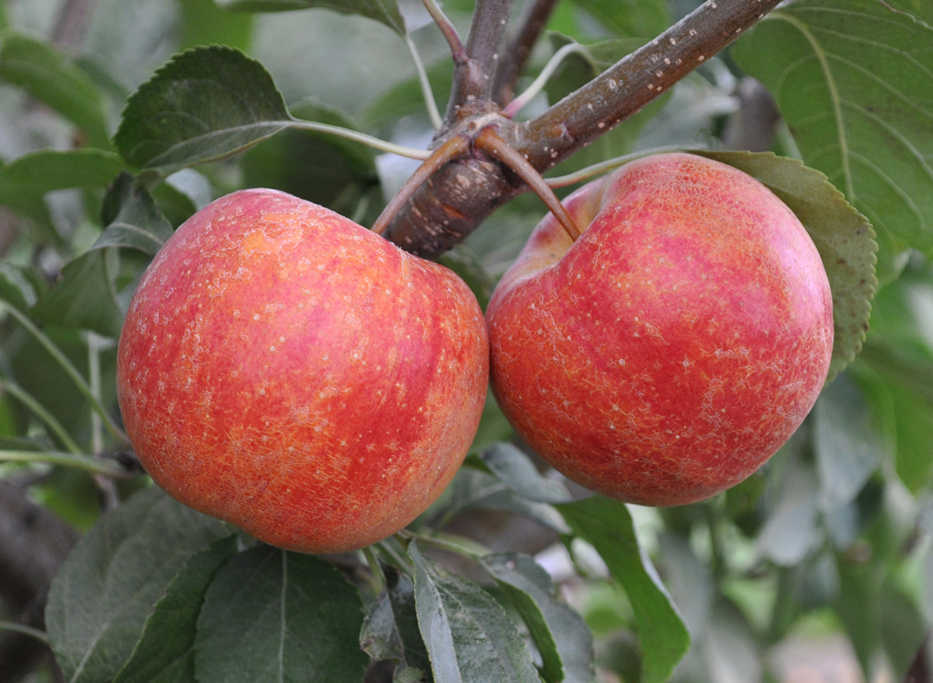Crabapple branches drenched in white, pink or red blossoms are a strong enticement to go out and buy one of these trees. First, however, put a little thought into which variety you plant.
There are about 900 varieties on the market, and planting a crabapple is a decision that lasts for decades.
To begin with, think beyond just the blossoms. For all their beauty, they are with us only a week or two each year. Crabapple fruits can be almost as decorative as the blossoms. And you also might consider the tree’s form, eventual size, and leaf color both in summer and fall.
But hold on: Before you are swayed by any of these shows of beauty, make disease resistance — yes, disease resistance — your first consideration in choosing a variety to plant.
Crabapples, like eating apples, are generally susceptible to fire blight, powdery mildew, cedar apple rust and scab diseases. A tree with splotched, curled or dead leaves is not a pretty sight. And if severe, a disease can actually kill your plant.
Fortunately, a number of beautiful crabapple varieties are resistant to one or more of these diseases. Unfortunately, a number of disease-susceptible varieties are too readily available. Steer clear of disease-susceptible varieties such as Almey, Eleyi, Red Silver and Hopa. Disease, poor form and short-lived flowers are all reasons to “kick the Hopa habit,” as my old horticulture professor used to say.
With the field narrowed to disease-resistant varieties, focus next on the fruits. Fruits of some varieties offer months of pleasure, as the golden or scarlet orbs dangle from the stems from autumn well into or even through the winter. The variety Calocarpa, with the unwieldy botanical name Malus x Zumi var. Calocarpa, clings to its glistening, half-inch-in-diameter fruits from late summer through December. Indian Summer is another variety notable for showy fruits, and, in this case, rosy red flowers and good fall color also.
You might also enjoy the sight of birds in late fall and into winter, flitting around the branches as they enjoy the fruits of some varieties. Birds particularly relish the small, red fruits of Sargent crabapple, a relatively small tree that is also pest-resistant.
Although the “crab” in crabapple means “sour,” a number of varieties bear fruit good enough to eat, and surely good enough to make into jelly, especially if they are large enough to justify the effort. The variety Dolgo is widely available, and if you grow it you’ll have to decide whether to enjoy the sight of the fluorescent red fruits dangling from the branches or the taste of them in the jelly jar. Other good cooking varieties include Cranberry, Hyslop, Transcendent and Redflesh, the last with fruit that is red right to the core.
In fact, a crabapple fruit does not even have to taste sour; the only thing that makes a crabapple a crabapple is fruit size. Any apple less than 2 inches across is by definition a crabapple. Centennial, Chestnut, Kerr and Wickson are crabapples that you will want to chomp into. The fruits are small for apples but large for crabapples.
As for form and leaf color, some crabapple trees are upright and large; most are rounded and medium-size. If you want a dainty dwarf tree, plant Coralburst, which has double pink flowers followed by small, reddish-orange fruits. How about White Cascade for a weeping crabapple, this one a waterfall of white blossoms that are followed by pea-size, yellow fruits? Royalty has the most dramatic leaf color: glossy purple in spring, greenish purple in summer, then brilliant purple in fall. The flowers are few, but are dark crimson, almost purple, and followed by — you guessed it — purple fruits.
http://www.leereich.com/blog
http://leereich.com/

